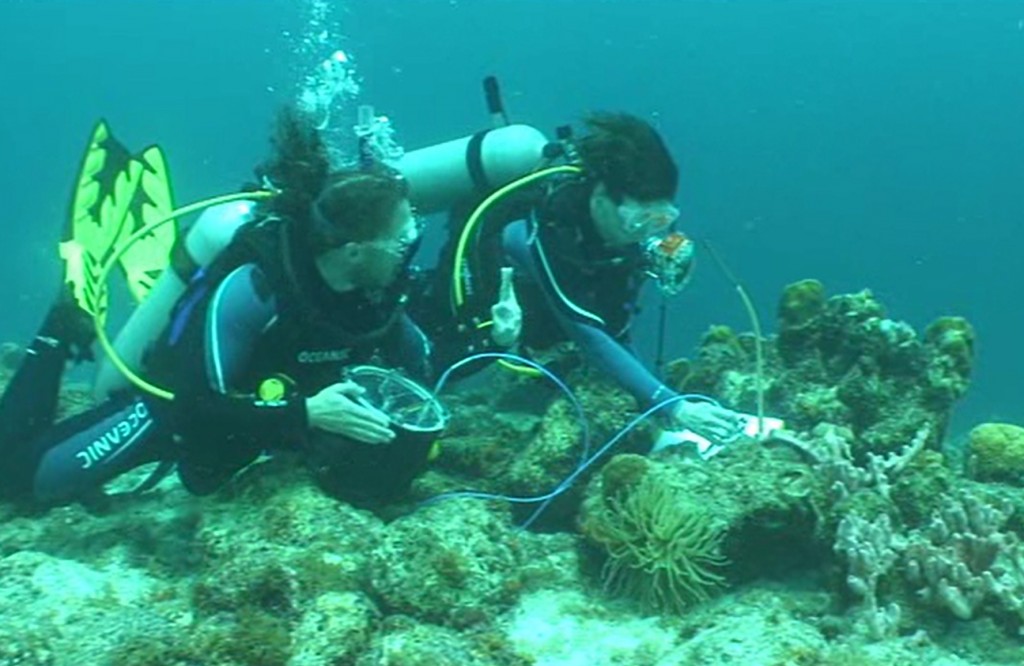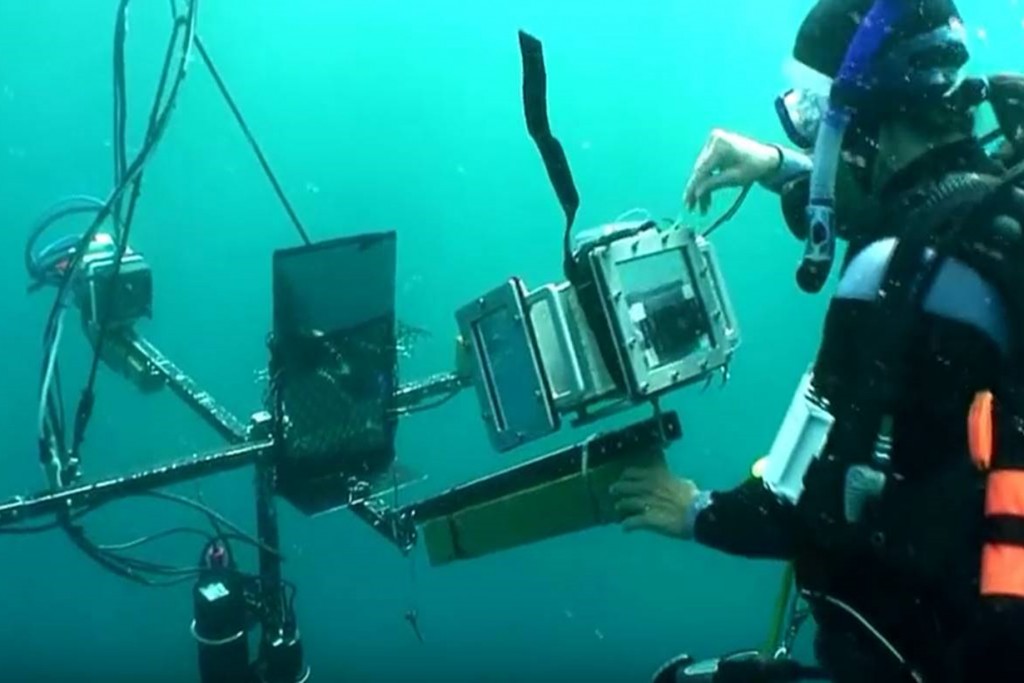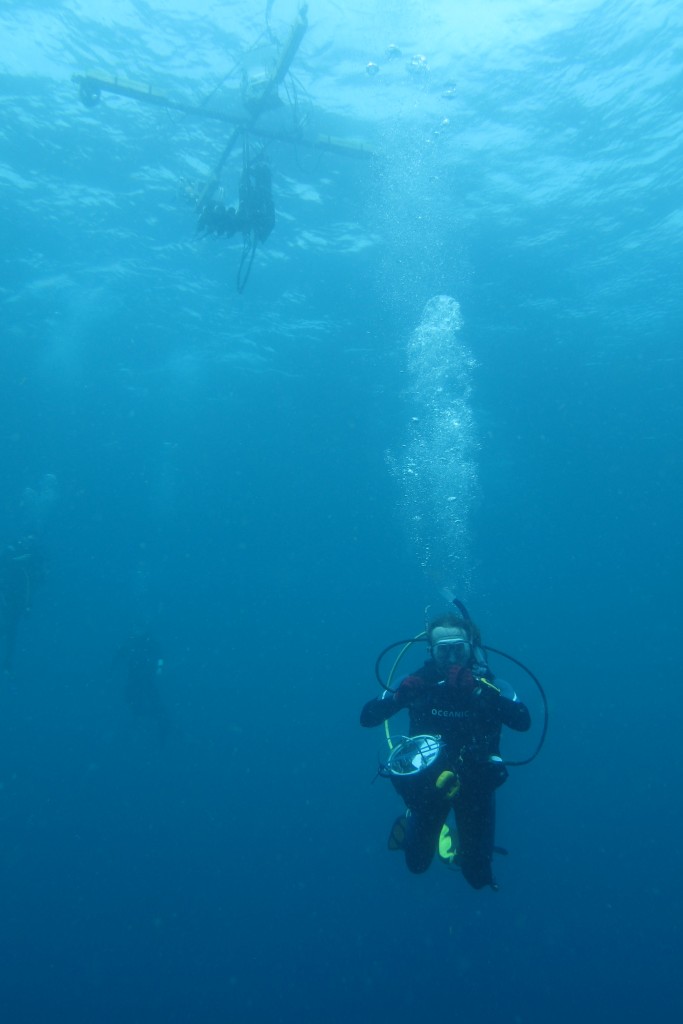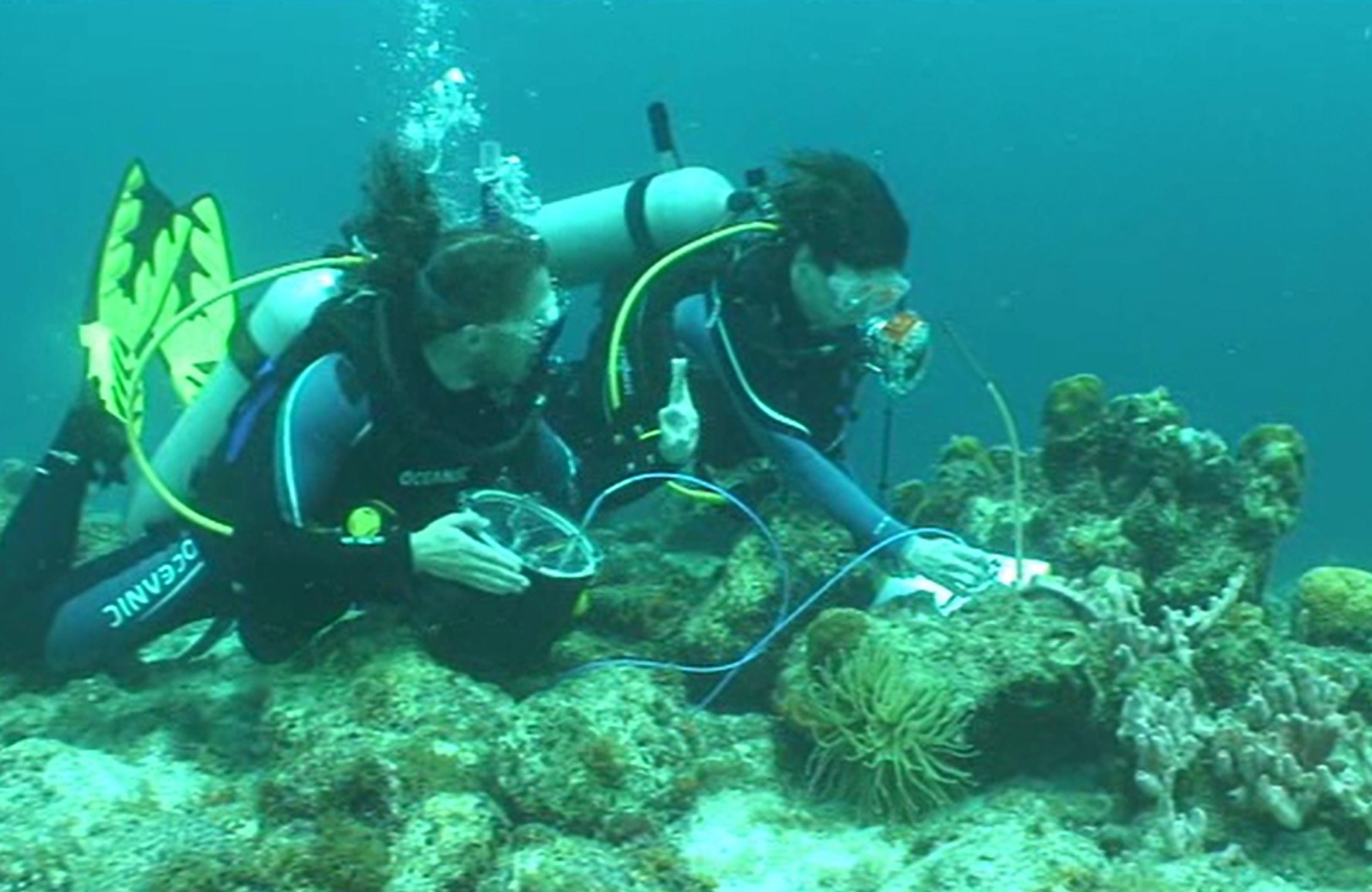
There’s an evolutionary arms race going on offshore, but people can’t see it. That’s because human eyesight can’t pick up on polarized light waves.
Many fish have polarized vision, however, and for open ocean fish in the family Carangidae – think Bigeye Scad and Lookdowns – the primary means of escaping from predators, according to a new study, is reflecting light in such a way that in an emergency they just “disappear.”
It has been a widespread assumption that silver-colored ocean fish act like mirrors, using reflected light from their skin to help them hide in plain sight. But in a paper published in the Nov. 19 issue of the journal Science, UConn researchers Heidi Dierssen and Brandon Russell and their colleagues report that certain fish use polarized light waves to protect themselves from predators.
Dierssen says the team’s field measurements show that the fish “are actually reflecting light better than a mirror.”
Dierssen, an associate professor, leads the Coastal Ocean Laboratory for Optics and Remote Sensing at the Avery Point campus, and has a joint appointment in marine sciences and geography. Russell is a Ph.D. candidate in her lab. Together they have been part of a Multi University Research Initiative (MURI) funded by the Office of Naval Research. The MURI charge was to have a variety of researchers from multiple universities take a synergistic approach to finding ways to unlock some of nature’s secrets of camouflage.

Along with Dierssen, who specializes in ocean-optics – the measurement of light fields and intensities – other researchers on the project were experts in such fields as visual ecology, organismal physiology, radiative transfer of polarized light, and the measurement of the optical properties of water.
Polarization is the orientation of light waves as they travel through space, Russell explains. Some animals are sensitive to it while others are not. What the researchers discovered is that these open ocean fish have developed the ability to use their skin for ‘polaro-crypsis,’ the ability to camouflage themselves against polarization. They reflect whatever light is hitting them in such a way that they essentially disappear from view by mimicking the light around them.
“It’s an optical illusion, ” he says, “and it’s an effective way of countering a predator’s attack strategy.”
Dierssen adds that how polarized light under water is visualized depends on the viewing angle of the predator. The fish have evolved specialized cells called guanine platelets, and the specific orientation of these platelets allows the fish to blend into polarized backgrounds.
In silvery Carangidae, these platelets have evolved to help fish be best hidden from the direction in which they’re most often being chased. This applies to both individual fish and whole schools, swimming together. It means that if a predator comes up from behind and then swings around to one side or the other, the fish stays hidden.
Dierssen says this study was the first field test – with live fish under natural conditions in the open ocean – to obtain the type of measurements that explained the actual process of polarization camouflage.

The researchers measured polarized light under water using specially developed spectrometers that they could position precisely in relationship with the sun so they could analyze the polarized light signals. “Only then could we begin to understand the light field that was hitting the fish and how it was preserving polarization,” Dierssen says.
This study also analyzed reflective properties of carangid fish found in coastal waters, where there is a bottom and water column particles that depolarize light. The coastal fish reflected light differently and didn’t have the same polaro-crypsis, demonstrating that different types of fish evolve to take advantage of the light field in their specific habitats.
What the Office of Naval Research will do with the results of this study of open ocean camouflage using polarized light waves is beyond the scope of Dierssen and Russell’s involvement, but the opportunity for the development of technologies that captures the polarized reflective capabilities found in nature raises interesting opportunities for further research.



